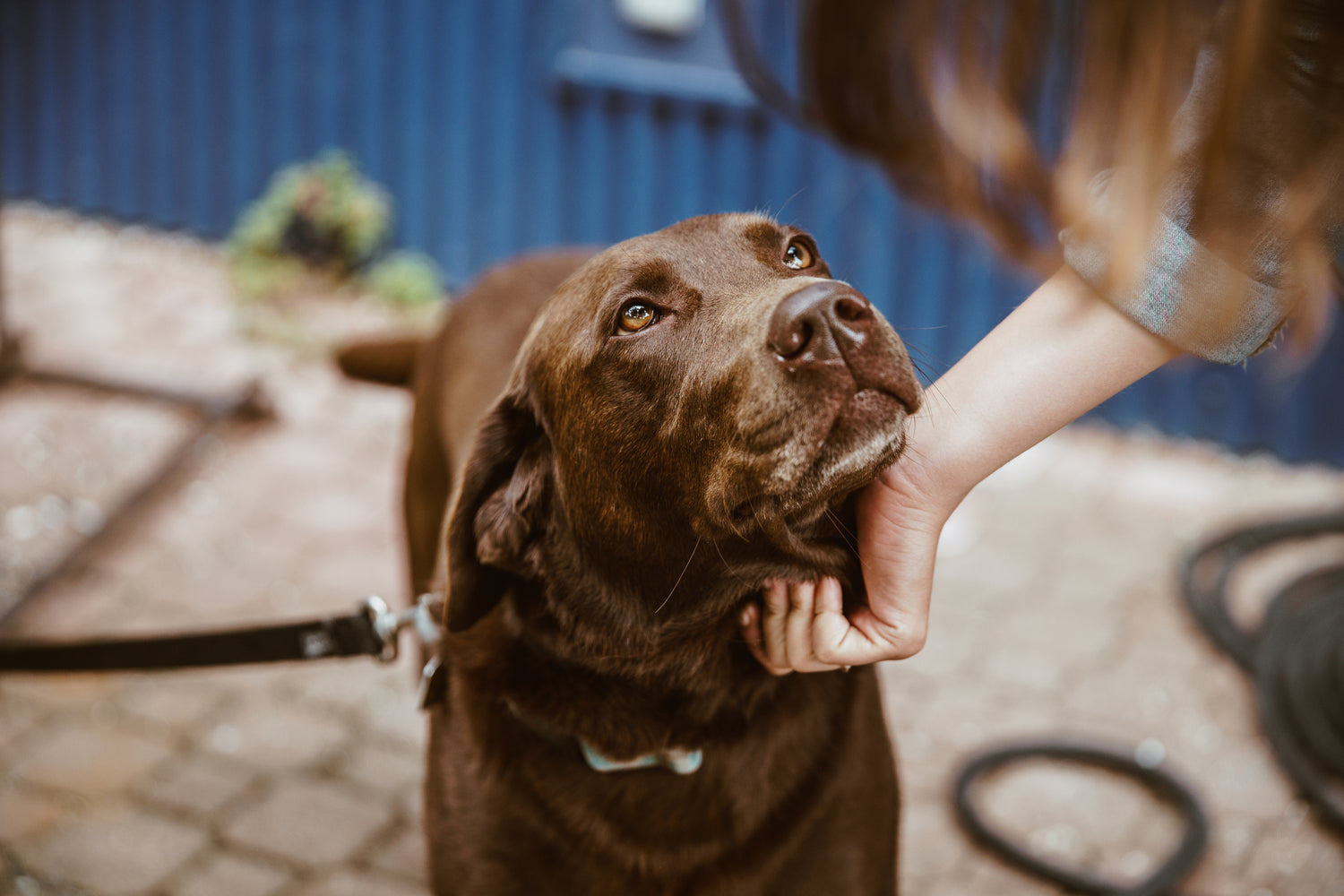Does My Dog Have Hip Dysplasia?
What Should I Do?

It’s a posture, or way of standing, that a dog adopts in order to try and alleviate some of the discomfort caused by hip dysplasia. It’s one of the overt and obvious symptoms of hip dysplasia in dogs, if you know what you’re looking for. These are some of the defining and recognisable features of the dog hip dysplasia stance:

In addition to the dog hip dysplasia stance, you may also observe your dog distributing their weight unevenly between front and hind legs, emphasising their weight on their front legs in order to reduce the strain on their rear ones. It may also be difficult for your dog to get up from lying down, and they generally appear stiff and reluctant to move. They may even be hiding from you, as hiding is one of a dog’s natural reactions to being in pain. Another symptom of a dog in pain is that they can become uncharacteristically aggressive.
If you notice any of the above, consult with your veterinarian. If your dog is suffering from hip dysplasia, the earlier a diagnosis is confirmed, and treatment given, improves the chances for a positive outcome.
Hip dysplasia in dogs isn’t reversible. Once a dog has developed it, your priorities will be:
The right strategies for canine hip dysplasia treatment can, in most cases, help with all of these objectives.
That said, with hip dysplasia, there are generally two routes to choose between, depending on the severity of the disease and the level of pain your dog’s experiencing:

There are various surgical procedures available to dogs with hip dysplasia. The most appropriate type will be chosen for your dog, depending on your dog’s eligibility, severity of disease, age, general fitness, and what outcome the surgery needs to achieve.
Post-surgical care closely resembles a conservative management approach. Much of your dog’s post-operative recuperation will involve the same strategies outlined above. Possible crate rest, physiotherapy and/or hydrotherapy, limited and controlled exercise, weight management, use of a supportive dog hip dysplasia brace, anti-inflammatory painkillers, and joint supplements to help support healthy joints and mitigate the onset of arthritis - these are all potential aspects of recuperative care your dog will likely need once they’ve had hip dysplasia surgery.
Sometimes dogs with severe hip dysplasia will ultimately benefit from using a dog wheelchair, which takes the weight off their back legs and allows mobility to be restored.
Keeping your dog with hip dysplasia as comfortable as possible is one way to help them. Assessing your home for any risks that might inadvertently exacerbate the symptoms of hip dysplasia (e.g. slippery floors) can also be beneficial.

Dog hip dysplasia is a condition that affects either one or both of a dog’s hip joints. The hip joint is unstable. This can cause, or be caused by, poorly conformed bones and lax hip joint ligaments. The ball of the thigh bone (femoral head) ends up rubbing against the hip socket (acetabulum) causing damage to the joint cartilage, and sometimes microfractures on the surface of the bone. Bone can end up rubbing against bone. Osteoarthritis inevitably develops because of this, which is very painful.
Any breed of dog can end up with hip dysplasia, but some breeds are more statistically prone to developing it because of inherited genetics. Labrador Retrievers, German Shepherds, Golden Retrievers, and Great Danes are among the breeds at risk. Hip dysplasia in a puppy can become evident when the puppy’s pretty little - it’s not uncommon for it to be diagnosed in puppies as young as 4 months old (particularly in a vulnerable breed or when it’s present in a puppy’s lineage). Otherwise, it’s often identified in midlife dogs, because they’re displaying symptoms of osteoarthritis.
Preventing hip dysplasia in dogs isn’t always possible. Certain lifestyle adjustments can, in some cases, lessen the likelihood of it developing, or the severity with which it presents, or slow its progression. You can learn more about dog hip dysplasia here:
Hip Dysplasia in your Dog - A Complete Guide
Being able to recognise the dog hip dysplasia stance is one easy way of being able to monitor your dog for signs of the disease. It’s a very visible, obvious sign of hip dysplasia in a dog. Being acquainted with the possible slightly different variations and nuances of the stance is advisable. Individually, or as a collective, the giveaways are: a narrow stance; an unusual, odd gait that’s uncharacteristic for your dog; a hunched back; and bunny hopping. Any, or all of these in combination, mean you need to make a vet’s appointment as they are all signs your dog is in pain and suffering from the effects of hip dysplasia.
What Should I Do?
What Are The First Signs of Hip Dysplasia In Dogs?
What Are The Different Levels of Hip Dysplasia in My Dog?
What Should I Do?
What Should I Do?
For Hip Dysplasia For A Dog?
What Should I Do?
My Dog Has Very Bad Arthritis In His Hips. What Should I Do?
What Happens, Is It Successful, What I Should Know?
My Dog Is Too Old / Too Risky For Hip Dysplasia Surgery. What Are The Non-Surgical Options?
Can Physiotherapy and Hydrotherapy Help my Dog with Hip Dysplasia?
My Elderly Labrador has Hind Leg Hip Weakness. Does He Have Hip Dysplasia?
I Have a 13-year-old Border Collie with Hip Dysplasia in his Rear Right Hip. What Should I Do?
with Hip Dysplasia

We can help find the right solution for your dog
Feel free to give us a call on 01730 622544
or email us at woof@zoomadog.co.uk
Leave a comment